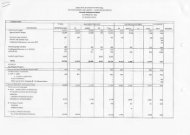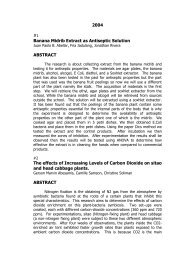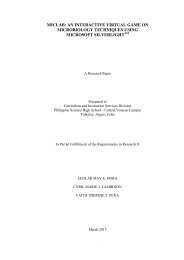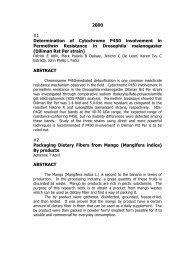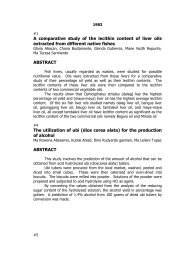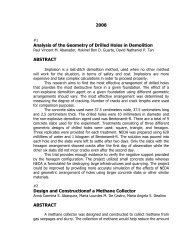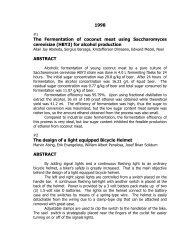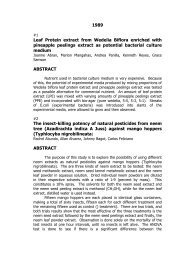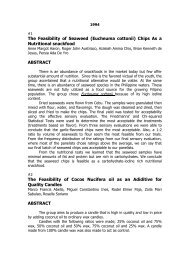(LATO) IN LOWERED SEAWATER pH - Central Visayas Campus ...
(LATO) IN LOWERED SEAWATER pH - Central Visayas Campus ...
(LATO) IN LOWERED SEAWATER pH - Central Visayas Campus ...
You also want an ePaper? Increase the reach of your titles
YUMPU automatically turns print PDFs into web optimized ePapers that Google loves.
is 100 times faster than any change during the past 650 000 years (Royal Society,<br />
2005; Siegenthaler et al., 2005). Elevated partial pressure of CO2 in seawater (also<br />
known as hypercapnia) can impact marine organisms both via decreased calcium<br />
carbonate (CaCO3) saturation, which affects calcification rates, and via disturbance to<br />
acid–base (metabolic) physiology. The oceanic uptake of anthropogenic CO 2 and the<br />
concomitant changes in seawater chemistry have adverse consequences for many<br />
calcifying organisms, and may result in changes to biodiversity, trophic interactions,<br />
and other ecosystem processes (Royal Society, 2005; Fabry et al., 2006).<br />
Climate change is a problem that is affecting people and the environment.<br />
Climate-focused agencies have been designing and implementing programs to help<br />
conserve the environment. Greater energy efficiency and new technologies hold<br />
promise for reducing greenhouse gases and solving this global challenge<br />
(http://www.epa.gov/climatechange, 2007).<br />
All across the world, people are taking action because climate change has<br />
serious impacts, locally and globally. For example, in 2007, scientists from the<br />
International Panel on Climate Change (IPCC) predicted that warming oceans and<br />
melting glaciers due to global warming and climate change could cause sea levels to<br />
rise 7-23 inches by the year 2100. Worldwide, densely populated coastal communities<br />
and infrastructure that supports them would be affected (such as city buildings and<br />
homes, roads, ports and wastewater treatment plants). Some would be flooded or<br />
more vulnerable to storm damage. In flat terrain, the shoreline could move many<br />
miles inland (http://www.ecy.wa.gov/climatechange/whatis.htm, 2007).<br />
6



